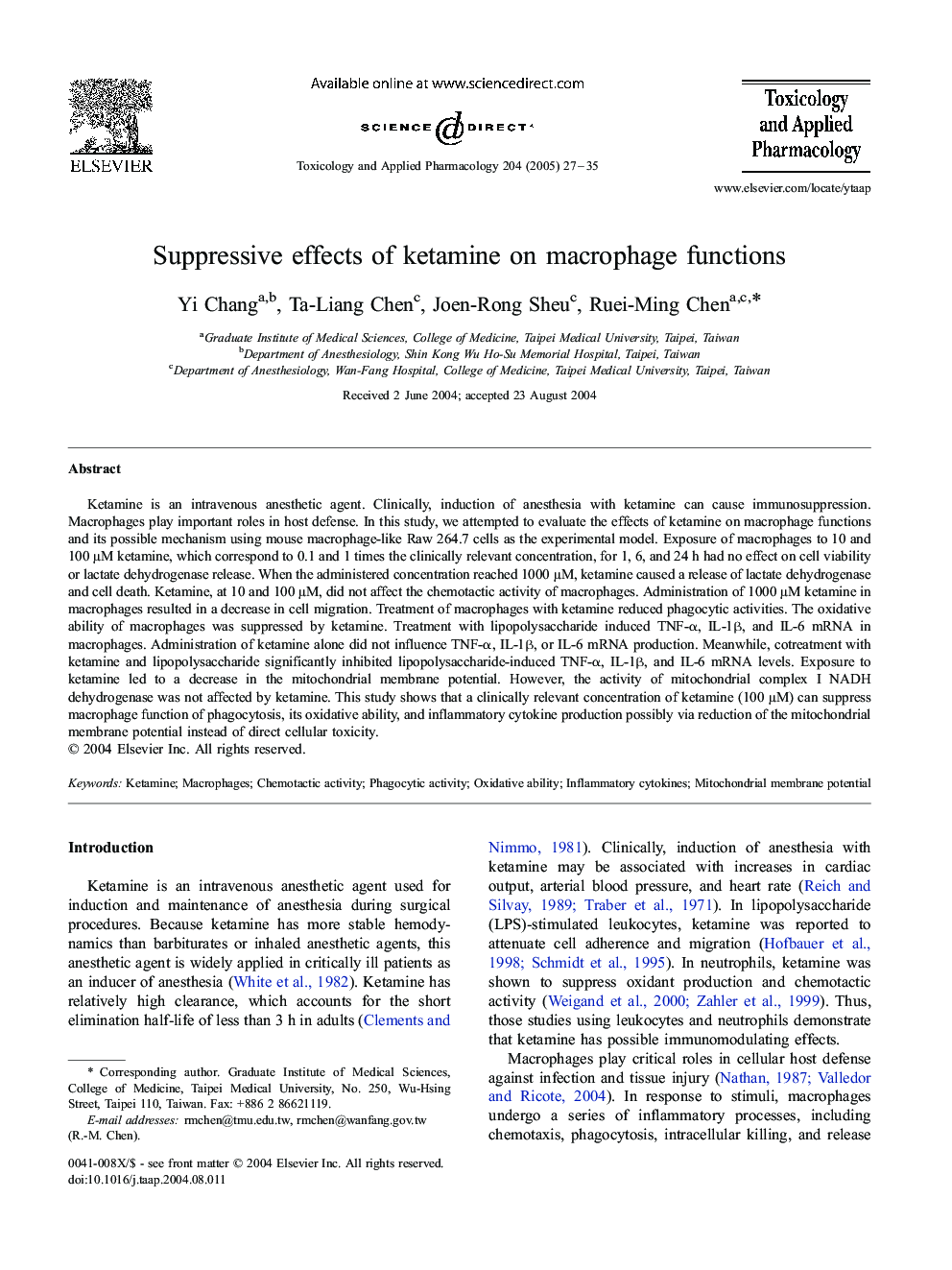| Article ID | Journal | Published Year | Pages | File Type |
|---|---|---|---|---|
| 9018289 | Toxicology and Applied Pharmacology | 2005 | 9 Pages |
Abstract
Ketamine is an intravenous anesthetic agent. Clinically, induction of anesthesia with ketamine can cause immunosuppression. Macrophages play important roles in host defense. In this study, we attempted to evaluate the effects of ketamine on macrophage functions and its possible mechanism using mouse macrophage-like Raw 264.7 cells as the experimental model. Exposure of macrophages to 10 and 100 μM ketamine, which correspond to 0.1 and 1 times the clinically relevant concentration, for 1, 6, and 24 h had no effect on cell viability or lactate dehydrogenase release. When the administered concentration reached 1000 μM, ketamine caused a release of lactate dehydrogenase and cell death. Ketamine, at 10 and 100 μM, did not affect the chemotactic activity of macrophages. Administration of 1000 μM ketamine in macrophages resulted in a decrease in cell migration. Treatment of macrophages with ketamine reduced phagocytic activities. The oxidative ability of macrophages was suppressed by ketamine. Treatment with lipopolysaccharide induced TNF-α, IL-1β, and IL-6 mRNA in macrophages. Administration of ketamine alone did not influence TNF-α, IL-1β, or IL-6 mRNA production. Meanwhile, cotreatment with ketamine and lipopolysaccharide significantly inhibited lipopolysaccharide-induced TNF-α, IL-1β, and IL-6 mRNA levels. Exposure to ketamine led to a decrease in the mitochondrial membrane potential. However, the activity of mitochondrial complex I NADH dehydrogenase was not affected by ketamine. This study shows that a clinically relevant concentration of ketamine (100 μM) can suppress macrophage function of phagocytosis, its oxidative ability, and inflammatory cytokine production possibly via reduction of the mitochondrial membrane potential instead of direct cellular toxicity.
Keywords
Related Topics
Life Sciences
Environmental Science
Health, Toxicology and Mutagenesis
Authors
Yi Chang, Ta-Liang Chen, Joen-Rong Sheu, Ruei-Ming Chen,
